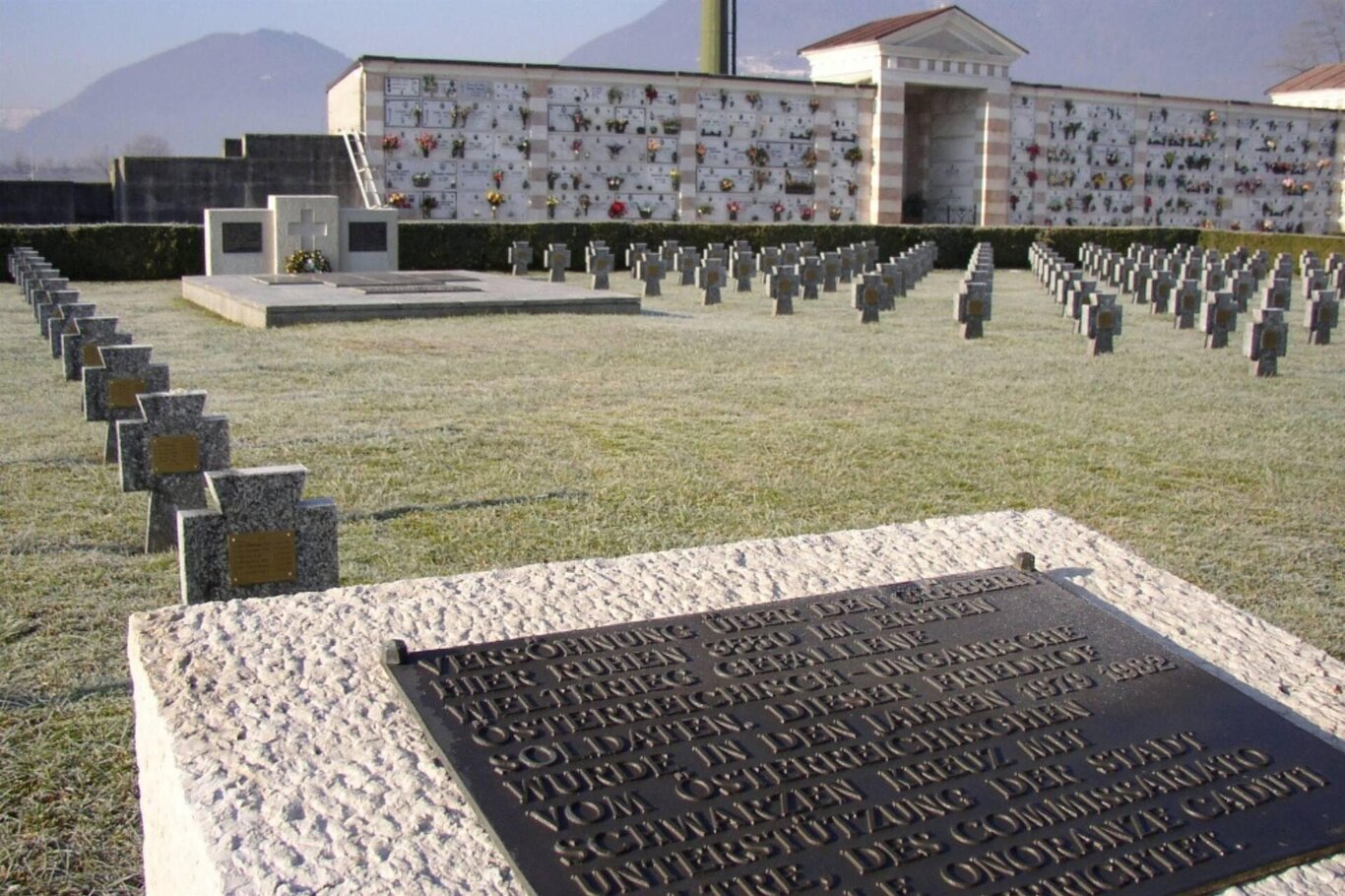Inside the civilian cemetery of Feltre, it is possible to visit a place linked to the memory of the Great War, namely the Italian Ossuary and the adjacent Austro-Hungarian cemetery. This area hosts nearly 5,000 remains of young soldiers, mostly who died in the last year of the war when some of the bloodiest battles of the entire conflict took place on the Grappa Massif.
The dome of the small church of the Ossuary is clearly visible even before entering the cemetery's enclosure. To reach it, one must cross the central avenue leading to the large portico that divides the cemetery in two. Along the way, it is possible to admire the Monument to the Fallen of All Wars, where, above a column, appears the bronze work entitled "The Resurrection of the Hero," conceived in 1920 by the Cadorin sculptor Annibale De Lotto.
Once the portico with the large Latin inscription "Silentes loquimur" is reached, access to the Ossuary is granted. Built in 1936, it consists of four walls forming a sort of open vestibule, on which are the tombstones of the 1,072 recognized Italian soldiers. Inside the small church, however, there are two niches that contain the remains of 370 fighters without identification.
Behind the Ossuary, a large space opens up, created between 1979 and 1982 in collaboration between the Austrian Red Cross and the Italian authorities, where the remains of 3,550 Austro-Hungarian soldiers have been placed. There are 1,550 crosses, each bearing the name of the fallen and their rank within the army. In the center of the meadow, a marble monument made of three simple blocks holds the remains of 2,000 soldiers without a name. It should be noted that among these graves is also that of the ace of the Austro-Hungarian aviation Kurt Gruber, four times awarded the Gold Medal for Military Valor, who was shot down with his aircraft on April 4, 1918, in Primolano (VI), in Valsugana.
